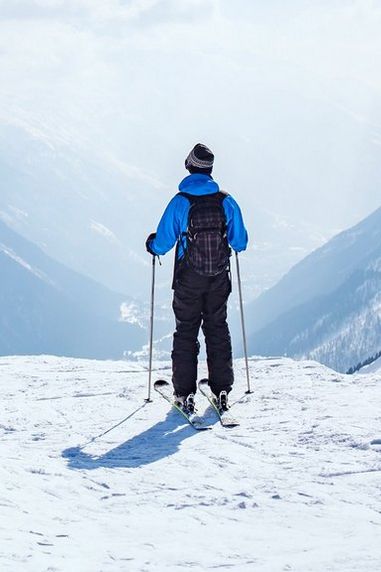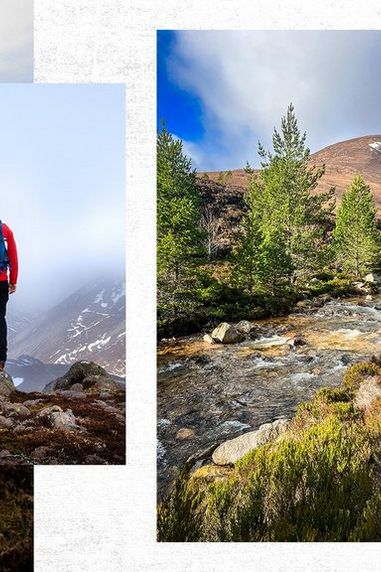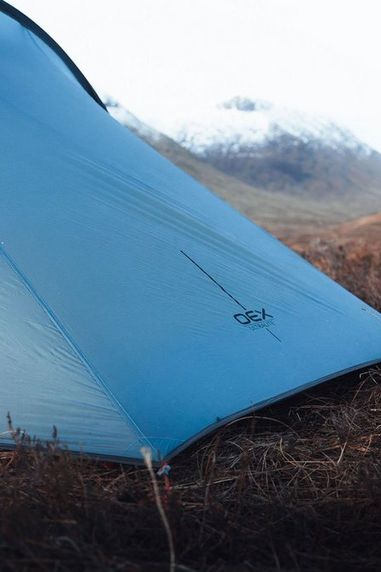
We can’t overemphasis the significance of an appropriate backpack and the affect a bad one can have on the overall outcome of your trip. Making sure you have a bag that is fit for purpose is therefore one of the most important parts of selecting your new bag.
Different activities and climates require different types of packs as do trips with varying lengths, modes of transport and itinerancy. This guide is therefore designed to help you think more intensely about your trip and ultimately guide you into finding your perfect pack.
Common Features
When determining what type of backpack you need, it helps to understand the common features and why they can be important.
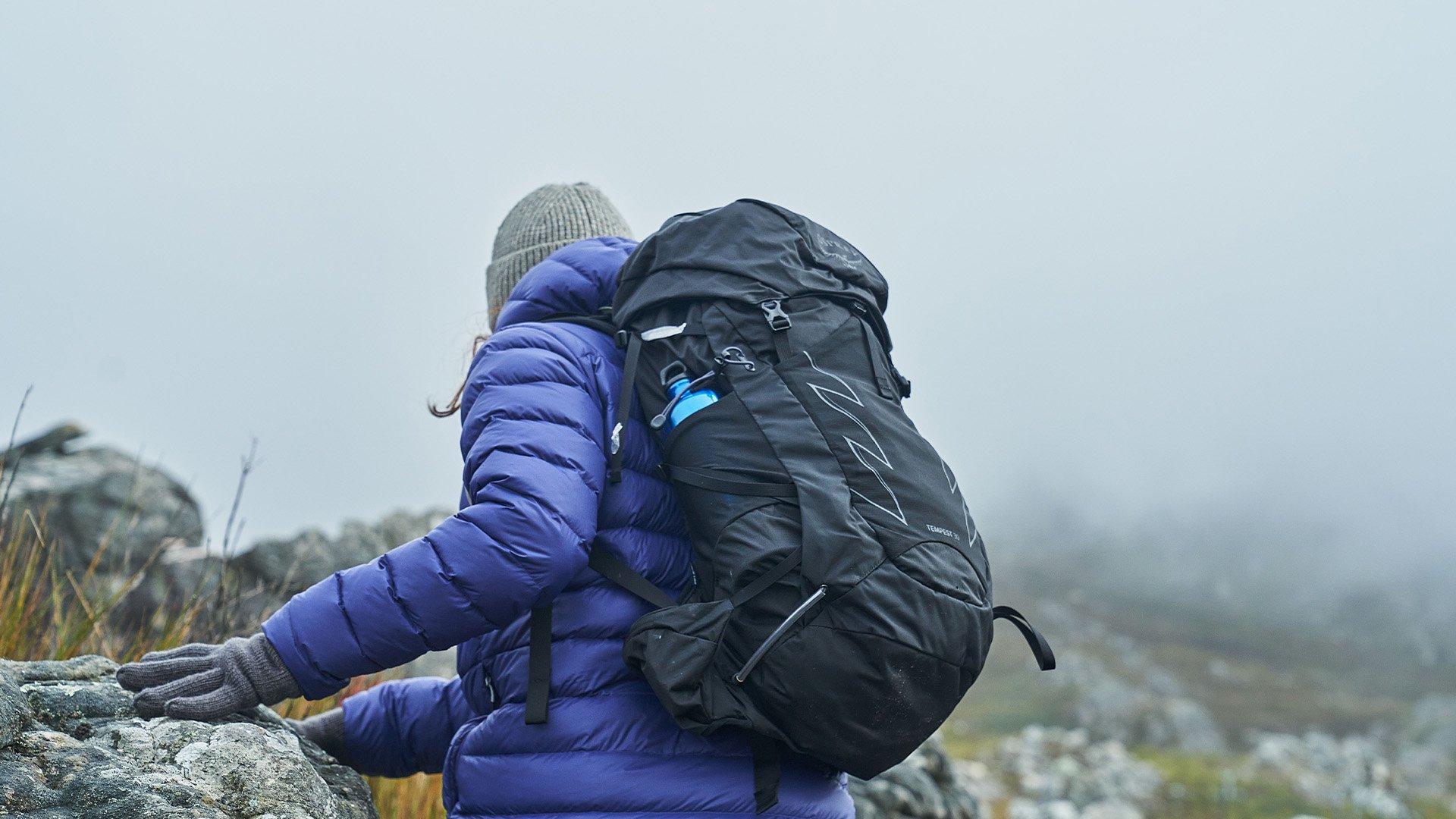
Access
How you access the main compartment of a pack can determine the type of activity it is suitable for.
Top access – on most backpacks, the main compartment is accessible through the top of the bag.
Front access – travels bags often feature front access to the main compartment, this makes the packing of clothing easier and more organised.
Side/base access –larger rucksacks sometimes feature alternative access to the main compartment through either the side or base of the pack.
Shoulder harness
Generally, the larger the rucksack, the higher quantity of technical features in a shoulder strap. Larger packs tend to be filled with heavier loads and therefore feature extra padding in the shoulder harness for improved carrying comfort. They also tend to be broader and ergonomically curved in larger bags. The wider surface area and curved shape prevent the strap from digging into your shoulder.
Back panel
The back panel (or back system) can greatly affect your comfort and performance. Often they feature foam padding to prevent solid items in your backpack digging into your back. Many rucksacks have mesh back panels, which provide ventilation to keep your back cool and free of perspiration during strenuous activities. The back panel of a larger rucksack can be adjustable in order to suit a person’s height.
Frames
Larger rucksacks will often feature either an internal or external frame, which helps transfer the weight of the load evenly.
Internal – cheaper packs have internal frames made from steel, whereas the more technical packs feature either an aluminium or carbon fibre frame, which are far more lightweight.
External – Usually made from aluminium, external frames are often used in larger capacity packs and come in a variety of shapes. Straight frames provide a sufficient amount of room between the pack and the back of the user to aid ventilation. S-shape frames are designed to conform to the shape of an individual user’s back. Hip wrap frames transfer some of the weight to the legs of the user via a free-floating hip belt.
Pockets
Pockets are featured on both the inner and outer of a backpack to aid the separation of your gear.
Inner pockets – ideal for smaller, losable items that you won’t need whilst you are walking or travelling.
Top/front/side zipped pockets – keep items available which you will likely need during a hike.
Side mesh pockets – ideal for drinks bottles, most common on daysacks.
Bellows side pockets – usually a feature of larger rucksacks. They are collapsible, meaning they can be packed away when not being used to keep the bag compact.
Belts
Hip belt – a hip belt will take some of the weight off your shoulders. In climbing rucksacks they are often removable to make way for a harness.
Sternum straps – connected across the chest, they are only found on very large capacity rucksacks which are used to carry heavy loads. They prevent the pack pulling your shoulders back to aid comfort and stability.
Hydration
Hydration compatible packs feature an internal pocket for a hydration bladder, with an exit hole for a drinking tube and a fastening for a mouth piece. Some packs come with a built-in hydration bladder and some smaller packs are entirely designed around hydration. These are often used during fast-paced activities such as trail running and cycling.
Compression
Compression straps at the side compress bulky packs to make them easier to carry by adding stability.
Dividers
Dividers are often removable and separate the main compartment into two sections. They are ideal when packing wet clothing.
Attachment points
Attachment points usually come in the form of either loops, eyelets, straps or bungee cords. Depending on the style or size they are often ideal for carrying a helmet, walking poles or ice axes.
Reflective
Many packs feature reflective patches or piping to increase visibility in poor lighting.
Rain cover
Rain covers are often packed away in the base or lid for easy access. Even rucksacks that are constructed using waterproof materials will rarely be fully waterproof at the seams. This is why many come with additional waterproof rain covers to keep gear dry in heavy rain.
Expansion
Sometimes backpacks will feature additional material around the opening that allows the top of the pack to be overfilled to increase storage capacity.
Detachable daysacks
Larger rucksacks, particularly those designed for travel, may come with a smaller detachable daysack. This increases capacity when attached or can be used separately by another member of the group. They are also ideal for day trips during travel as you can leave your larger rucksack back at a hotel or hostel.
Our tip
More features may not necessarily mean a better rucksack. Rather than going for a rucksack with a large quantity of features we advise that you think about the specific requirements your chosen activity needs. For example, climbers will require certain attachment points and less space in the main compartment, whereas backpackers need a large capacity to fit in sleeping bags, spare clothing etc.
Fitting
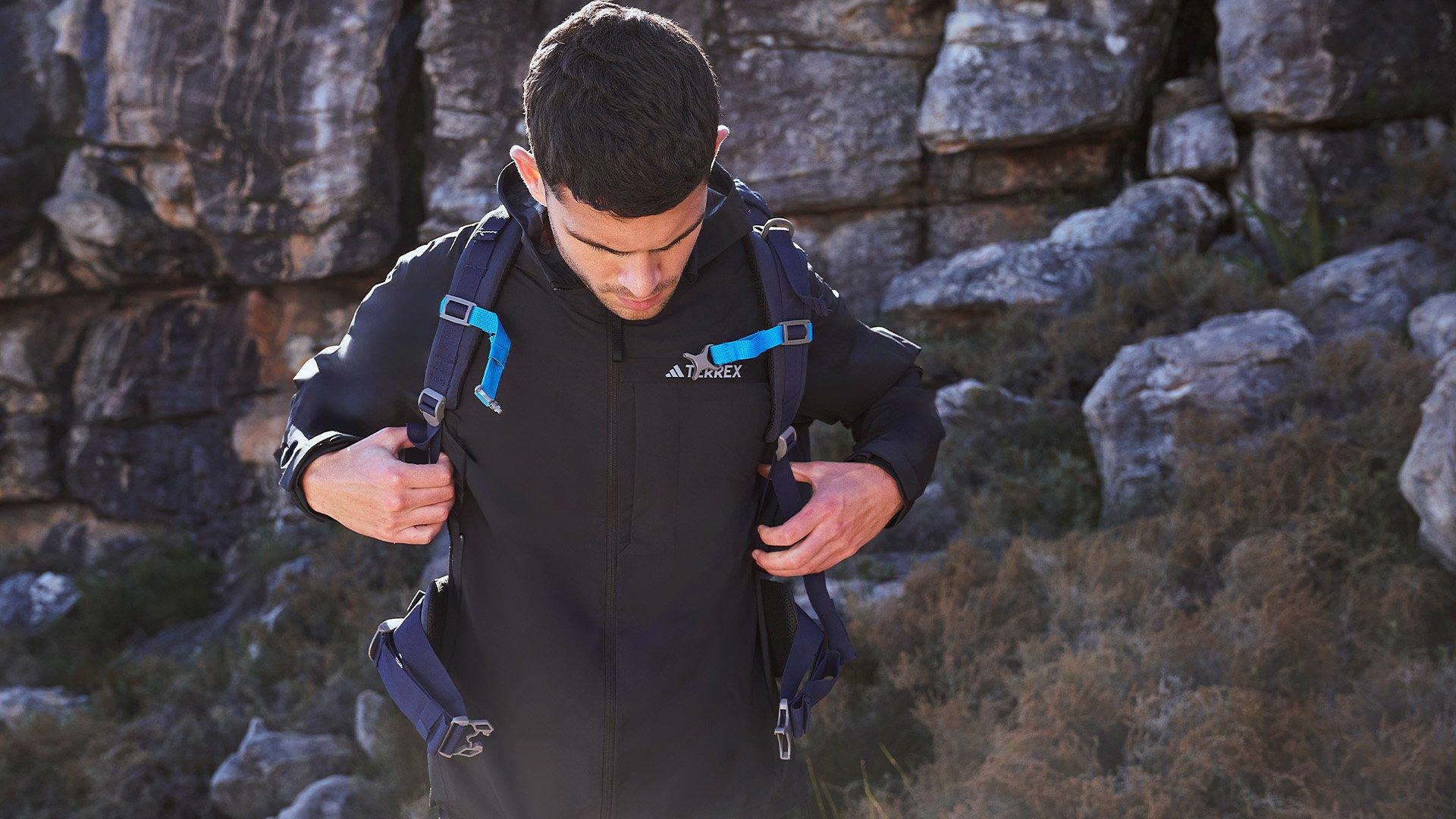
Large rucksacks may be carried at the shoulders but they are also supported by your back, legs and waist. Therefore, it is crucial that your chosen pack fits you correctly. A badly fitting rucksack can increase fatigue and even cause pain and serious damage to certain body parts after prolonged use.
Back systems
There are two types of back system, fixed and adjustable. Fixed back systems will either fit you or they won’t. For this reason manufacturers will often produce fixed back rucksacks in a variety of sizes. Adjustable backs are customisable to suit your size, with the ability to increase and decrease the distance between the shoulder straps and hip belt.
How it fits
When fitting a rucksack, the shoulder harnesses should curve snugly over the shoulders. The hip belt should sit on the hips, not around waist, so that more of the weight is transferred from the shoulders to the pelvic region. The hip belt should be tightened before tightening the shoulder straps. Do not overtighten at the shoulders as this may cause friction when you start walking. Finally, the chest strap should be fastened and tightened until you feel it take the pull off the front of your shoulders.
Our tip
To test the weight distribution of your rucksack once it is fitted you can get someone else to firmly hold the hip belt and shake it, you should move with it if it fits correctly.
Activity Requirements
Day trips
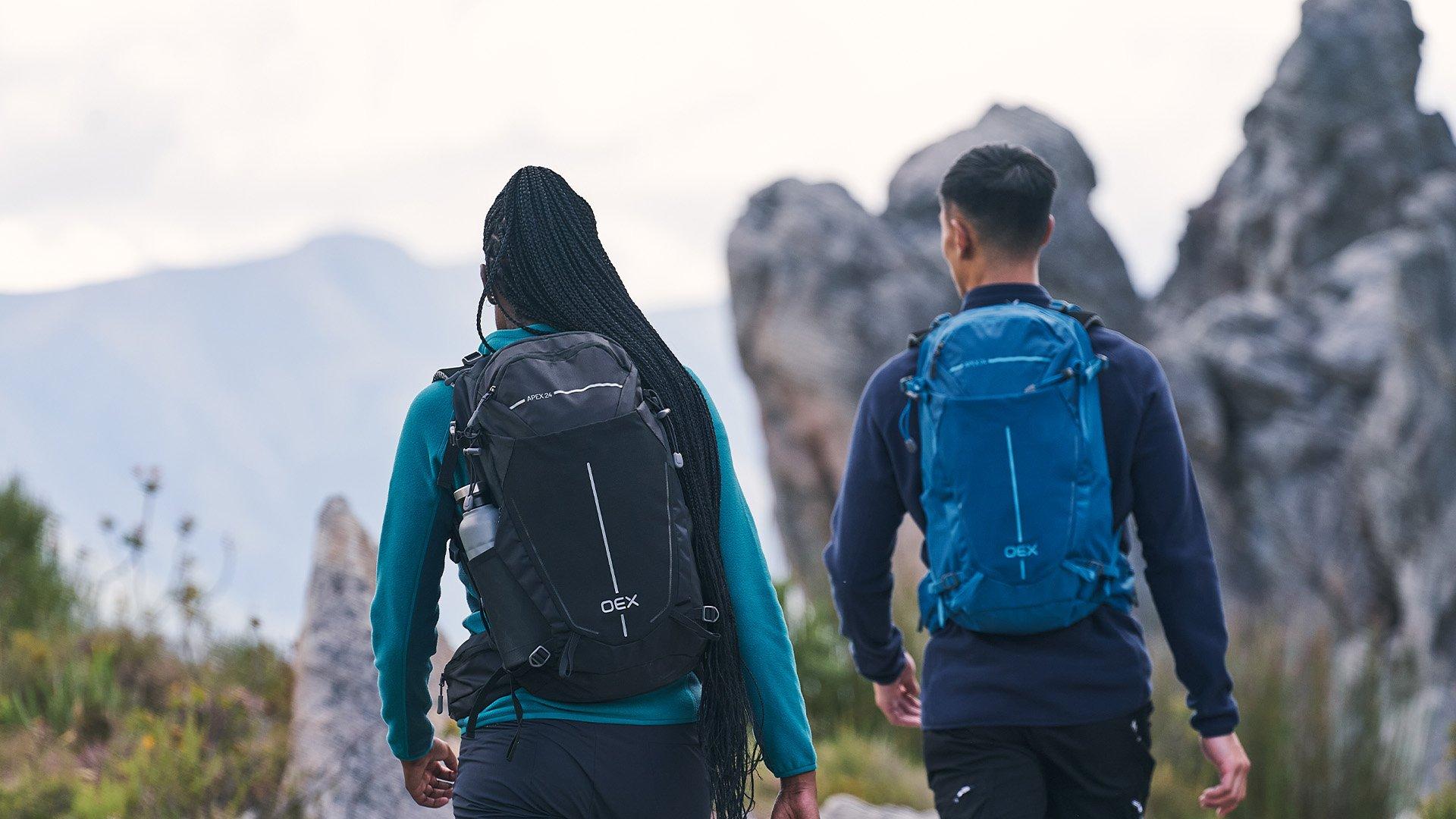
For day walks, hikes and trips you should pack as light as possible. A 15-30 litre daysack is usually ideal. In the winter you may need to pack bulkier clothing and therefore require a larger 25-40 litre backpack. On days out you will most likely require easy access to most of your packed items so side pockets and front pockets are ideal for storing drinks bottles, maps, phones etc.
When cycling or trail running, smaller, lighter packs of around 5-15 litres are ideal. Hydration compatibility can be a great performance booster too and there are a number of packs that are designed solely around hydration, with a built-in bladder and easy access mouth piece.
Many people simply need a daysack for their daily commute. For this reason, many manufacturers tailor their daysacks with laptop and tablet sleeves.
Our tip
If your adventure consists of multiple day trips during a longer stay, it is advised that you purchase a lightweight, packable daysack that can fit in a larger rucksack or travel bag.
Backpacking
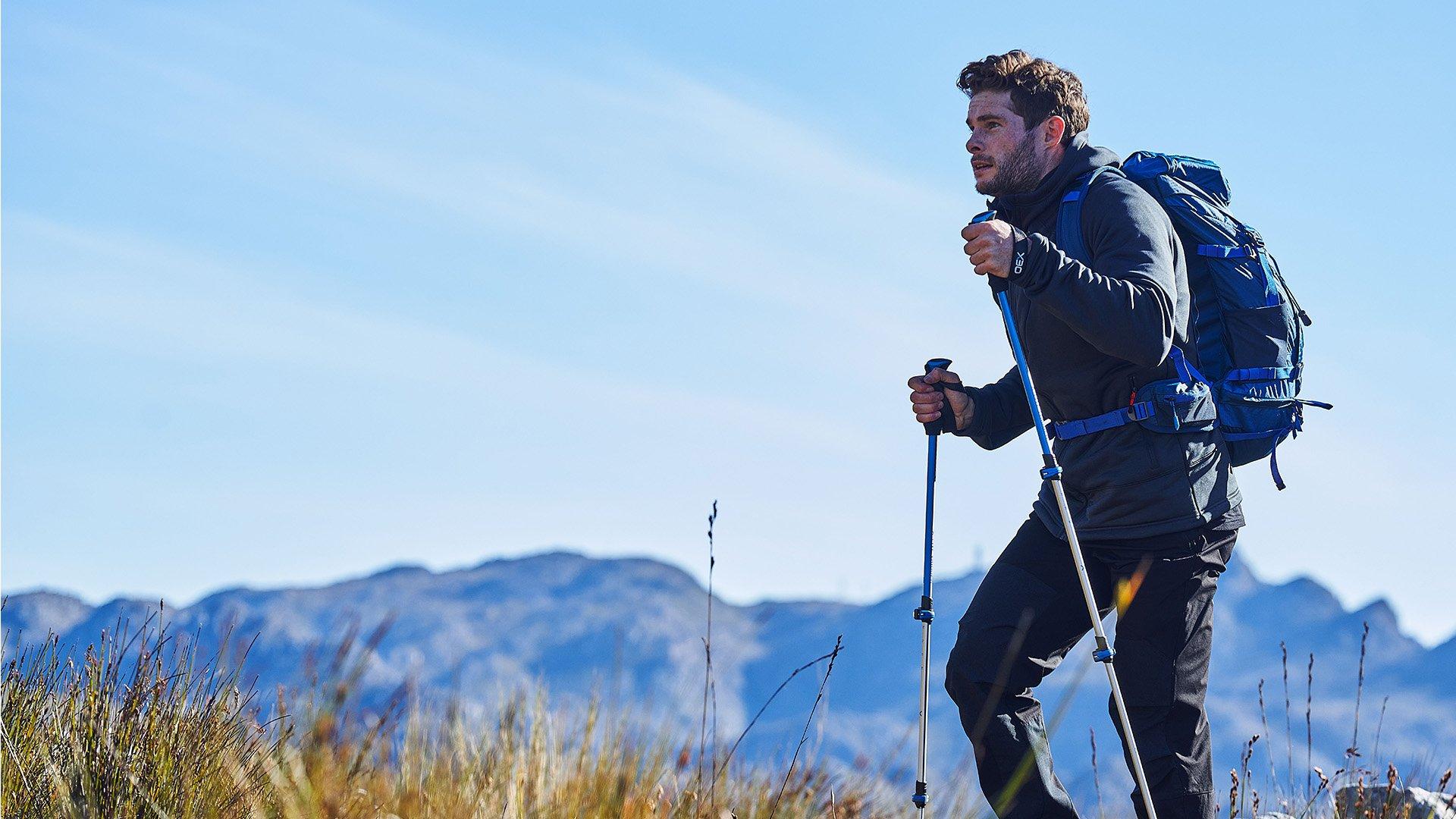
For multi-day hiking trips it is advised you take a larger rucksack with a 55-80 litre capacity. Items such as tents, sleeping bags and mats take up a large amount of space, so if you are staying in hostels or hotels then you can greatly reduce the size of backpack needed. A removable divider in the main compartment can be an essential way of keeping wet clothing separate from your sleeping bag or dry clothes. A large top pocket is also useful to keep smaller items handy. Attachment points may be needed if you are using walking poles.
Our tip
Try to use a rucksack that is no wider than you. A wide rucksack can often snag on rocks and branches, plus they can be a nightmare if you use public transport. Bellows side pockets, which pack away when not being used, are an ideal feature.
Alpine & Climbing
A lighter load is a happier load when it comes to packing for alpine pursuits, so a 40-60 litre rucksack is usually ideal. When climbing, an important feature is a removable hip belt. A hip or waist belt can interfere with a climbing harness and inhibit your freedom of movement. A haul loop is similar to the carry handle at the top of a pack and allows a rucksack to be easily pulled up. This is often required during a difficult climb when your pack would interfere too much to carry on your back. A rope compressor loop can sometimes be found under a rucksack lid. It allows your climbing rope to be secured when not in use yet remain easily accessible.
Our tip
Some rucksacks have removable back panels which can double up as a sitting mat without adding extra weight to your load. These can be ideal for resting during alpine activities.
Travel
When travelling, it is likely that you will require a large storage capacity so 60 litres should be a minimum with a larger pack required depending on the length of time you will be on your travels. Travel packs are often called holdalls and are longer in length with a single shoulder strap that positions the pack by your side. These types of bags make packing clothing easier and look less incongruous when travelling through a city than a rucksack.
If you plan on spending time away from civilisation during your travels it is best to purchase one with both a single shoulder strap and twin shoulder straps for alternative carrying options. However, usually the twin shoulder straps and back system on a holdall aren't as comfortable as rucksacks. So if you are going to spend more than half your time using it as a rucksack, it is advised that a large conventional rucksack is purchased instead. Many rucksacks feature a detachable daysack, which allow you to leave your large rucksack at home on days out or let a weaker member of the group carry it.
Our tip
Purchase a body wallet to keep essentials such as money, cards and passports in. Keeping these items in your holdall poses an obvious security risk and due to the size of the packs they can easily get lost.
Packing Advice
Incorrectly packing your backpack can adversely affect your adventure in many ways. Items can get lost, clothing can get wet and the weight of your pack can be imbalanced and make carrying the load much more difficult than it needs to be.
Before starting, open all the storage areas to maximise the space in each compartment.
Draw up a comprehensive kit list – the last thing you want is trying to squeeze something you have forgotten into a full rucksack.
Evenly distribute the weight – spread out heavier items to prevent pressure on either shoulder, also heavier items such as fluids and metal tent pegs should be positioned in the centre.
If in doubt, leave it out – if you are unsure whether you will need an item, the likelihood is that you won’t. Save weight by leaving out all items you are unlikely to use (unless they are for emergencies, e.g. first aid kits, safety whistles)
User small, soft items to fill tight gaps – for example socks, t-shirts etc.
Avoid fixing additional items to your pack – always try to find room inside your pack, rather than attaching items to the outside. Exceptions to this include items that attach to specially designed points, such as sleeping mats, walking poles and helmets.
Keep anything you may need on the move in the easy access pockets – including maps, guide books, torches, suncream, money, mobile phone, documentation, food or drink.
Keep sleeping bag and liners at the bottom with spare clothing and any first aid kits just above for accessibility – you will more likely require extra clothing and first aid kits on the move, whereas your sleeping bag will only be used at the end of the day.
Don’t add weight that your pack can’t handle – below is a rough guide of comfortable pack weights per rucksack capacity sizes.
30 litres – 5kg
50 litres – 8kg
65+ litres – 12kg

